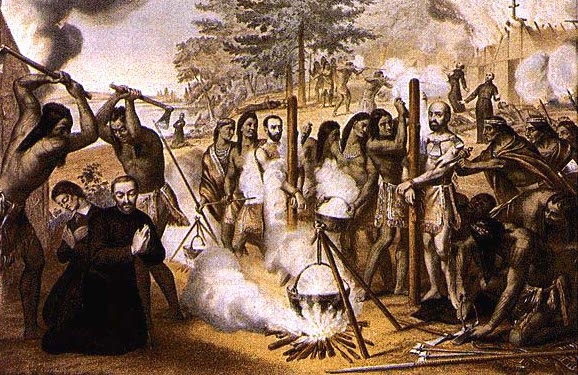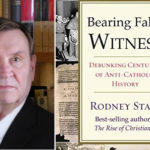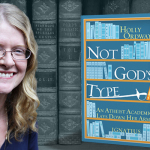Can Victims of Cannibals be Raised from the Dead?
by Matthew Allen Newland
Filed under Heaven
Last summer I had the pleasure of writing my first article for Strange Notions, on the topic of bodily resurrection. Some time later, I came across a discussion group on another blog that happened to be focused on my article! Naturally intrigued, I took a few minutes to look around and read what the readers there had to say. It was nothing good. Among the snarky remarks was this gem: "I had fish for lunch. I wonder which of us is going to get resurrected from our (now shared) atoms."
Today I'd like to address that topic. I mentioned it vaguely in my original article, when I noted that the bodies of the dry bones Ezekiel saw in his dream had been picked clean by the carrion birds, and that a human body's atoms might be dispersed by earthquakes, dynamite, or a hungry bears. But the question is a really intriguing one, and I think trying to answer it presents a rather daunting challenge. What follows is my attempt.
Recycle, Reuse, Reduce?
The problem here basically involves recycling. Dead bodies not only decompose but "spring to life" again in other forms. They are not raised up in their former forms, but their components are inevitably integrated into new living systems. Compost in the garden. A dead antelope feeding a lion (a lion whose body is composed, in part, of antelope meat). Imagine first century Romans feeding Christians to wild boars, and then feasting on the pigs themselves in a post-persecution barbecue. Thanks to the miracle of digestion, we could imagine someone's body becoming part of a pig's body, and then in turn becoming part of another person's body. As the particles composing the former pass on to nourish the latter, resurrection suddenly becomes a very messy business indeed.
My last article, again, suggested that quantum entanglement might (possibly) allow a continuity of experience to be preserved, maintaining one's identity beyond death and decomposition. But "recycling" makes things trickier; if the experiences of one body's parts were to become integrated into the experiences of some other body's parts, whose identity will be preserved when the day of resurrection comes?
Canadian Cannibals
In the eighteenth century Voltaire, cheeky as always, gleefully described such a problem when he proposed the following situation. He asked that we imagine a French soldier who has traveled to Quebec and finds himself lost in the woods far away from his station. Starving, he does the unthinkable: he kills and eats a native Iroquois whom he meets in the forest. One man has eaten another, but the problem is even greater than we realize. For Voltaire goes on to tell us, “The Iroquois had fed on Jesuits for two or three months, and a great part of his body [i.e., the Iroquois's body] had become Jesuit” (qtd. in Morley, 1901/2012, 5.2).
Because the Iroquois in Voltaire's example had been eating missionaries for such a long time, we can imagine our French soldier to have a body composed (in part) of the body of an Iroquois, whose own body had been composed (much more substantially) of Jesuit bodies (several of them!). Even if entanglement somehow preserves the subjective experiences of the dead Iroquois within the body of the French soldier (might we imagine two souls in one body?), what about the experiences and identities of those Jesuits whom the Iroquois had been eating? Are we to say that all these men live on in the French soldier’s body?
What a confusing mess!
An Old Question
But it turns out Voltaire’s question, as well as the one asked by the blog commentator whom I mentioned at the beginning, is nothing new. About 1,300 years before Voltaire wrote about his starving soldier, the question of "which is who?" had already been asked by St. Augustine in The City of God. Augustine suggested that if human flesh were ever eaten (directly via cannibalism or indirectly by an animal eaten by another human being), then that flesh would on the Day of Resurrection, “be restored to the man in whom it became human flesh” (Bk. XXII, Ch. 20). That is, whoever had it first will have it restored to him or herself when all the dead are raised up.
Not simply dismissing the question there, Augustine then goes on. He supposes that any recycled flesh “must be looked upon as borrowed by the other person, and, like a pecuniary loan, must be restored to the lender” (Ibid.). It is "owed" to him or her, in that case, and must be given back on the last day.
If this is correct, then even someone who was eaten, rather than buried, remains the true “owner” of the particles which had once composed his or her body!
A Closer Look
A second response to Voltaire comes from the seventeenth century, just twenty years before Voltaire’s birth. In 1674, when the English scholar Humphrey Hody considered this recycling problem himself, he had another question to ask. How much of a living body actually becomes the body of the thing that eats it? According to Hody, the percentage of a body actually capable of nourishing the body of a cannibal (or other carnivore like a lion or bear) is negligible. Most of the structure comprising a human body is either inedible, or else not very nourishing. One cannot digest bones or tendons, for example, and these would not be part of the cannibal's meal even if he (or she!) were especially hungry. And if indeed none of these parts were eaten, even if by cannibals, then there is very little chance that one could ever have a body comprised entirely of someone else's body.
The dead may rest in peace, wherever their bits might be scattered.
Hody goes on to point out that there are a lot of examples of “indirect” cannibalism: “from the bodies," he says, "of the dead springs up grass, this when eaten by the ox, is turned into flesh; this we eat, and the flesh of the ox becomes ours” (qtd. Kaufman, 2008, p. 202). Yet even when this happens, a very tiny bit of what was once "cow" (or "ox" ... only about 2% of the flesh that is actually eaten) makes it into the body of the person who eats it. Even if we were to imagine a carnivorous cow who was feeding directly on human bodies, this would make little difference. And especially since I have never heard of a carnivorous cow to begin with, I rest assured that little of such a cow would be formerly human, thus giving me little reason to worry about “second hand cannibalism” as preventing the bodies of the dead from being raised up.
Bringing the scattered parts back together is one thing (and a tall order for the skeptical!), but at least as far as the recycling problem is concerned, it would appear that Voltaire was exaggerating. When it comes to eternal life, we have nothing to fear from cannibals.
Sources
Augustine, The City of God from Nicene and Post-Nicene Fathers, First Series, Vol. 2. Philip Schaff, ed., M. Dods, trans. Buffalo: Christian Literature Publishing Co. Revised and edited for New Advent by Kevin Knight., First edition published in 1887.
Kaufman, D. 2008 “The Resurrection of the Same Body and the Ontological Status of Organisms: What Locke Should Have (and Could Have) Told Stillingfleet” in Contemporary Perspectives on Early Modern Philosophy., P. Hoffman, et al., ed. Peterborough: Broadview Press.
Morley, J. 2014. The Works of Voltaire, a Contemporary Version. Adelaide: The University of Adelaide Library. First published 1901.
Related Posts
Note: Our goal is to cultivate serious and respectful dialogue. While it's OK to disagree—even encouraged!—any snarky, offensive, or off-topic comments will be deleted. Before commenting please read the Commenting Rules and Tips. If you're having trouble commenting, read the Commenting Instructions.













